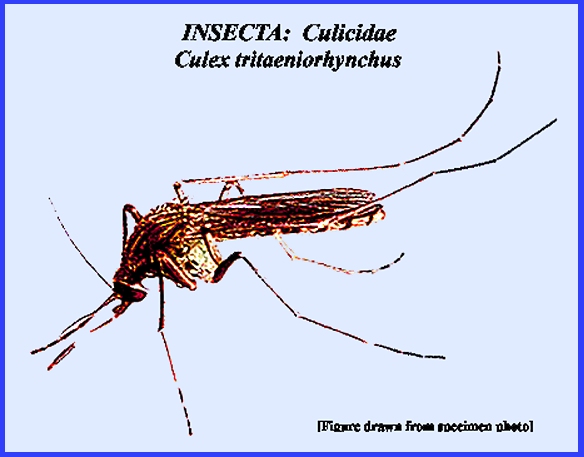File: <japaneseencephalitis.htm> <Medical
Index> <General Index> Site Description Glossary <Navigate
to Home>
|
JAPANESE ENCEPHALITIS (Contact) Please
CLICK on
underlined links for details:
The
transmission cycle involves mosquitoes biting water birds such as herons,
egrets and ibises, which are the main reservoir hosts. Some infected mosquitoes also draw blood
from pigs, which develop high viraemia and are thus amplifying hosts (Service
2008). When infected mosquitoes bite
birds or pigs and later bite humans they can transmit the virus. Humans are dead-end hosts and thus there
is no human-to-human transmission. Vectors that
transmit to birds, humans and pigs are the rice-field Culex
tritaeniorhynchus, Culex vishnui and Culex pseudovishnui. Culex gelidus that breeds in
streams and rice field is also a vector and is thought to maintain the virus
in pig-to-pig transmission. In
southern India Mansonia indiana behaves as a secondary vector. Japanese Encephalitis -
Life Cycle = = = = = = = = = = = =
= = = = = = = = Key References: <medvet.ref.htm> <Hexapoda> Matheson, R. 1950.
Medical Entomology. Comstock
Publ. Co, Inc. 610 p. Service, M. 2008. Medical
Entomology For Students. Cambridge
Univ. Press. 289 p Legner, E. F. 1995. Biological control of Diptera of medical and veterinary
importance. J. Vector Ecology 20(1):
59_120. Legner,
E. F.. 2000. Biological control of aquatic
Diptera. p. 847_870. Contributions to a Manual of Palaearctic
Diptera, Vol. 1, Science Herald, Budapest. 978 p. |
